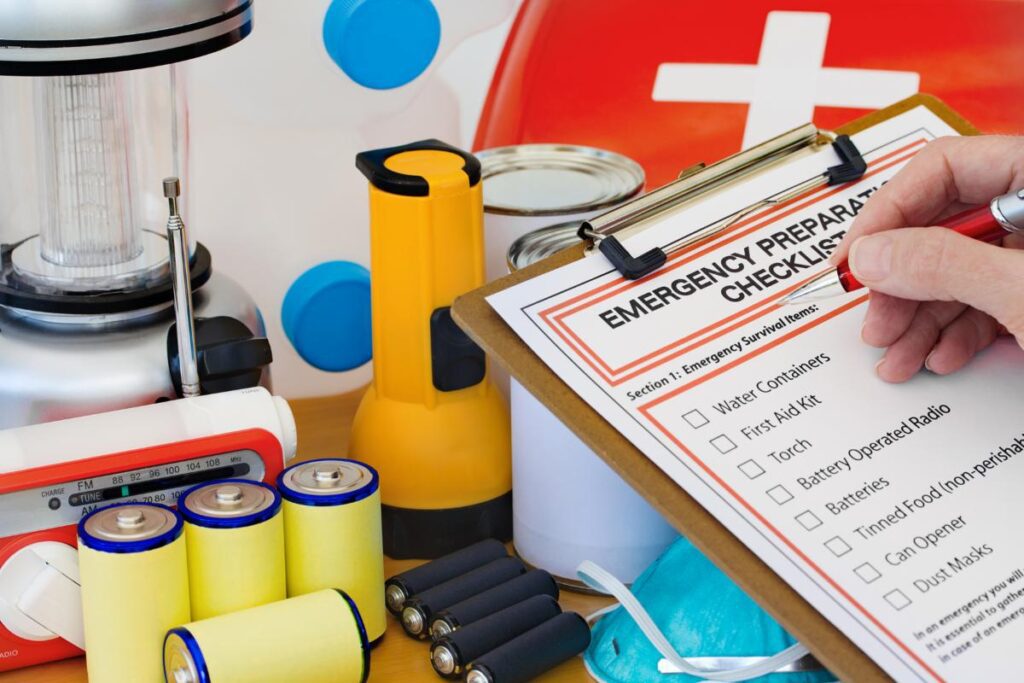
Being ready for an emergency means following simple steps in advance to ensure you can weather a crisis safely and comfortably.
When it comes to emergencies, basic needs for survival are the same for everyone: first aid, food, clean water, batteries, shelter, communication.
While individual needs and circumstances vary, one thing is for sure: it’s not a question of if, but when an emergency will happen. Take steps today to prepare for tomorrow.
- Water – At least a 3-day supply; one gallon per person, per day
- Water purification tablets or filtration system
- Portable water containers
- Food – At least a 3-day supply of non-perishable, easy to prepare food
- Pet supplies and food (if applicable)
- Baby supplies and food (if applicable)
- Blankets
- Medications (7-day supply) and medical items (hearing aids with extra batteries, glasses, contact lenses, syringes etc.)
- Sanitation and personal hygiene items
- Personal and medical documents (medication list, pertinent medical information, insurance policies, birth certificates, passports, etc.)
- Cash on hand
- Flashlight with extra batteries
- Battery powered radio with extra batteries or hand-crank radio (NOAA Weather Radio, if possible)
- Glow sticks
- Signal mirror
- Emergency Whistle
- Compass or GPS device
- Maps of the area and evacuation routes
- Emergency contact information for local authorities or emergency services
- Tools and supplies for securing your residence
- Emergency shelter (such as a lightweight tent or tarp)
- Waterproof matches or lighter
- Poncho or emergency raincoat
- Hand warmers
- Insect repellent
- Sunscreen and Lip balm with SPF protection
- First aid kit (see below)
A well-prepared first aid kit is essential. Here’s a list of items that should typically be included:
- Adhesive bandages and sterile gauze pads (various sizes)
- Medical adhesive tape
- Triangular bandage (for making slings or securing dressings)
- Elastic bandages (for sprains and strains)
- Antiseptic wipes or solution (such as iodine or alcohol wipes)
- Antiseptic ointment or cream (such as Neosporin)
- Disposable gloves (latex-free)
- Tweezers
- Scissors
- Safety pins
- Instant cold packs
- Sterile saline solution (for cleaning wounds)
- Thermometer
- Pain relievers (such as acetaminophen or ibuprofen)
- Antihistamine (for allergic reactions)
- Hydrocortisone cream (for itching and rashes)
- Burn gel or dressing
- Eyewash solution
- First aid manual or instructions
Customize your first aid kit according to your specific needs, activities, and the number of people it will serve. Regularly check and replenish supplies to ensure everything is up to date and ready for use.
